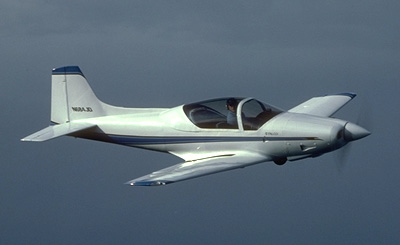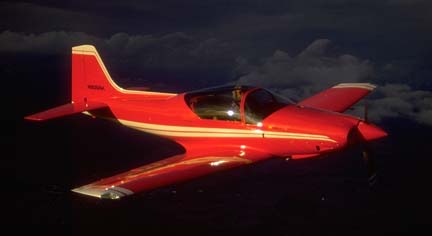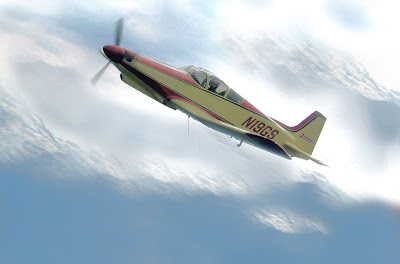This topic fires me up. Let me get the flamesuit on and rant for a little.
I don't know why the certification nazis on here are so defensive about mogas use. This blind faith in 100LL is almost cultish. I sympathize with the experimental crowd. They got the right attitude. My only criticism of the builder side of that crowd is they are so infatuated with the activity of building they don't seem half as interested in flying, evidenced by the trend (IMO as a turn-key pilot) of building beautiful impressive aircraft with HORRIBLE cockpit layouts, as a collective. Other than that, I find them the only eventual answer to the survival of GA for the "little guy". Everybody running full AB towards accepting at face value the escalating operating costs of affording "the hobby of flying" are simply validating the attrition warfare doctrine that suggests flying is worthy only of those fortunate with higher disposable income thresholds. That elitist attitude makes no sense to me.
The level of misinformation about the thermodynamics of fuel combustion in old piston engines versus the legal artificialities introduced by the criminalizing of behavior (aircraft certification as a whole comes to mind) is something many on here get mixed up quite easily.
I have a C-150 with a mogas STC. I use 87 octane exclusively. The price differential between 87 octane mogas and 100LL is NOT arbitrary to me. $2.75 versus $4.00 and upwards of $6.00 at x-c destination type airfields. That's north of a 50% delta. No preventive maintenance/mod would offset such a direct operating cost savings. So pushing for the introduction of cost-saving fuel measures is something that not only do I patronize, but support and keep an open mind about, unlike a lot of the replies I read on here. My engine was not designed for the amount of lead introduced by 100LL, nor can it take advantage of the higher octane. The use of mogas benefits my engine at annual as evidenced by no lead fouling problems and better plug shape year to year. Should I pay a prohibitive premium because the sight of the carting of 5-gallon cans back and forth my aircraft amongst your "garmin 430 WAAS-as-a-necessity-laden hobby" causes you discomfort? The looks I get imply my "kind" is somehow undeserving of being on that side of the fence. Yet I'm not the one gearing-up my Bo every other week, driving insurance off the roof for everybody. If I didn't know better I'd think they're bellying up on purpose

My impetus is to keep aviation acessible to my future children, not to keep lyco in business and the GA market cornered with 60-year old engine specs and an LSA market designed to allow those people previously accustomed to pricing out the peanut gallery on certified aircraft to continue to do so with a glorified kite. Vapor lock vapor sclock....
As to the alluded differences between old-spec piston engines and modern water-cooled ECU-driven auto engines, the differences here are duly noted, but are quite overstated. There's nothing magical that happens between 7:1 and 8.5+:1. Nothing. Most mogas application questions arise out of the fuel pressure delivery systems and line designs in these old aircraft, than simple thermodynamics as it pertains to CR. Simply stated, 87 octane will run fine in many aircraft originally certified for 91/96 avgas.
I spoke with Petersen specifically about the O-320 series and the 160HP upgrade attained by 8.5:1 pistons. From the horse's mouth? Nothing happened with the introduction of 87 octane in this configuration. Granted, just like their fuel plumbing modifications on the PA-28 series calls for, issues with these STCs have more to do with poor fuel system design than the bona fide suitability of mogas inside of the combustion chamber. As such, the tests we discussed were accomplished on the Cessna 1xx series, which obviously benefits from an organic positive pressure delivery system, and largely mitigates the vapor lock issues. No variable timing ECUs, spark retardation and anti-knock sensors needed. None. Just a sticker. The reason the FAA told Petersen to go pound sand with 87 and 89 octane on 8.5:1 jugs had to do with the usual fear-mongering and liability spiel endemic to GA. They told them "placard it at 91 [effectively mimicking the original avgas certificiation] or you lose all that R&D expense". Petersen said OK and now they sell it to you as gospel. The only way I was even able to get them to cough up that factoid out was by cub-scout swearing my inquiry was largely academic and that after our conversation was over I'd continue to view the STC stated limitations as the word of God handed down from the Heavens itself (sure...

). So let's not confuse the criminalizing of behavior as contributing in any shape or form to the physical and thermodynamical realities of such fuel applications.
I can only conclude that such insistence on the anti-mogas crowd to dismiss the viability of automotive gasoline stems more from the implicit litmus test that if you can't afford $6.00/gal of juice you're unworthy of participation in american aviation, than a real concern on the part of the aforementioned for the safety and lives of ordinary people with a dream and fascination for the activity of flying. They really should quit staring, it almost makes it look like I have moonshine and this is 1920.


 .
. 





 Passive people can't and won't build experimental planes as they take alot of self control and personal dedication to get something finished. Out of hundreds and maybe 1000 or more people who are signed onto this list I can count on one hand the ones who have completed a kit plane and flown it. Care to comment on why that is.
Passive people can't and won't build experimental planes as they take alot of self control and personal dedication to get something finished. Out of hundreds and maybe 1000 or more people who are signed onto this list I can count on one hand the ones who have completed a kit plane and flown it. Care to comment on why that is.



